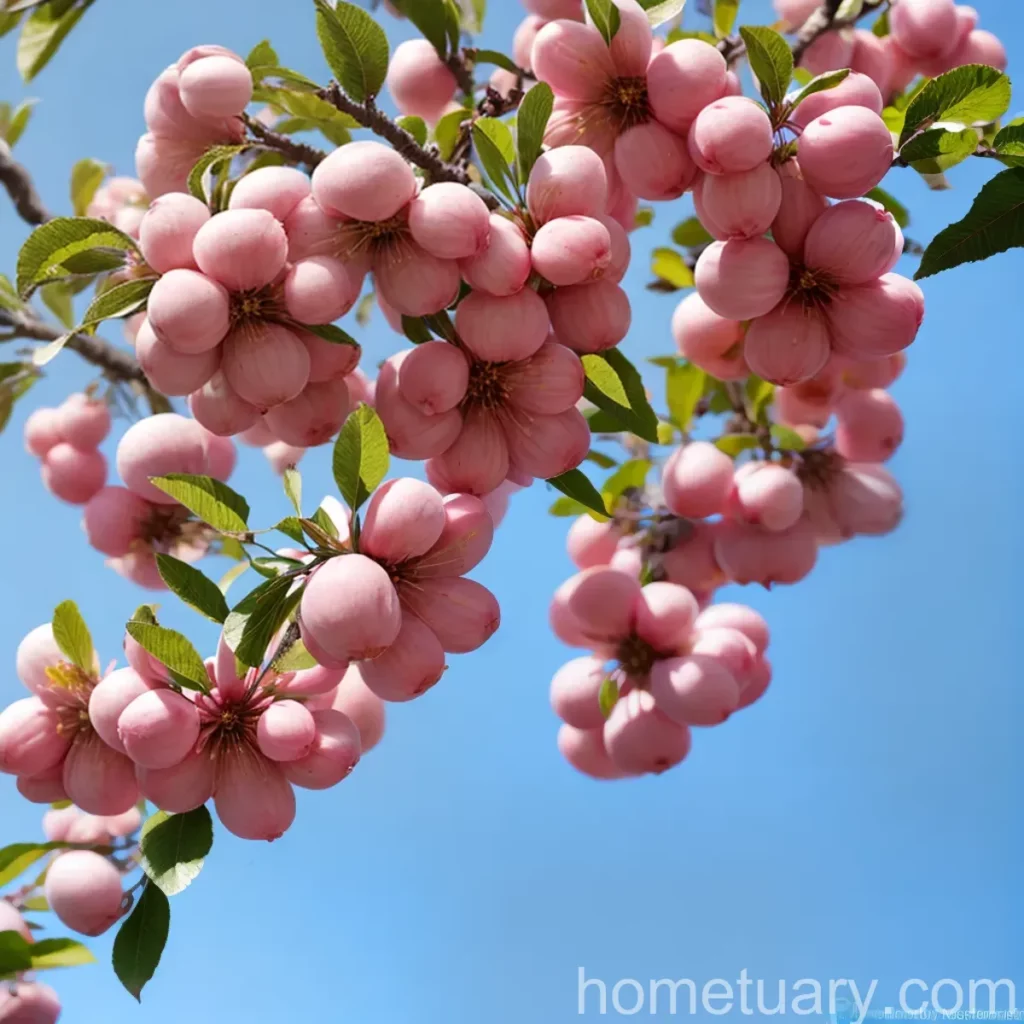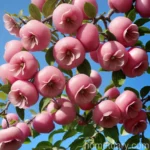Flowering Crabapple (Malus ‘Adams’): A Comprehensive Guide
Introduction
Welcome to our detailed guide on flowering crabapples, focusing specifically on the Malus ‘Adams’ variety. In this article, we will explore the culture, uses, maintenance, diseases, and pests associated with these beautiful ornamental trees. The flowering crabapple, especially the Malus ‘Adams’ cultivar, is widely cherished for its vibrant blossoms, attractive foliage, and unique features. If you are interested in learning more about this stunning plant, its care, and its benefits, you have come to the right place. Let’s delve into the captivating world of flowering crabapples.
Overview of Flowering Crabapple (Malus ‘Adams’)
What is the Plant?
The flowering crabapple, scientifically known as Malus ‘Adams’, is a deciduous tree that belongs to the Rosaceae family. It is renowned for its striking appearance, primarily due to its colorful blossoms and attractive foliage. The ‘Adams’ cultivar is a small ornamental tree that is cultivated for its ornamental features rather than for fruit production.
Flowering crabapples are prized for their ability to enhance the visual appeal of landscapes and gardens, making them a popular choice for homeowners, landscapers, and garden enthusiasts. Their intriguing symbolism, low-maintenance nature, and diverse array of attractive attributes have made them a favored addition to outdoor spaces.
Key Takeaways – Flowering Crabapple (Malus ‘Adams’)
Before we delve into the specifics of the flowering crabapple, let’s highlight some key takeaways about this captivating tree:
- Flowering Crabapple Varieties: There are numerous varieties of flowering crabapples, with each offering distinctive features and characteristics. The Malus ‘Adams’ variant is one such cultivar, renowned for its unique attributes.
- Crabapple Tree Cultivars: Cultivars of the flowering crabapple, including the Malus ‘Adams’, have been selectively bred to exhibit particular traits such as bloom color, size, and disease resistance, catering to various landscaping preferences.
- Crabapple Tree Care: Proper care and maintenance are essential for ensuring the health and vitality of flowering crabapples. Understanding the specific requirements of these trees is crucial for their successful cultivation.
- Crabapple Tree Diseases: Like many plants, flowering crabapples are susceptible to certain diseases, and it is important for growers to be aware of these potential issues in order to implement preventative measures.
- Pruning Crabapple Trees: Correct pruning techniques play a significant role in ensuring the overall health and aesthetic appeal of crabapple trees, including the Malus ‘Adams’ variety.
Culture of Flowering Crabapple (Malus ‘Adams’)
Cultivating the Malus ‘Adams’ variety requires a fundamental understanding of its cultural needs. From water requirements to soil preferences, a well-rounded comprehension of the plant’s cultural needs is essential for its prosperous growth.
Water
Flowering crabapples, including the Malus ‘Adams’ cultivar, necessitate adequate moisture, particularly during their initial establishment and active growth phases. However, it is imperative to strike a balance, as excessive water can lead to root rot and other related issues. Regular watering, especially during dry periods, is crucial for maintaining healthy and vibrant crabapple trees.
Sunlight
Adequate sunlight is vital for the flourishing of flowering crabapples. These trees thrive in full sun, which generally refers to at least 6 hours of direct sunlight daily. With optimal sun exposure, the Malus ‘Adams’ variety exhibits its full potential, including abundant blossoms and lush foliage.
Fertilizer
Proper fertilization is pivotal for the overall health and vigor of flowering crabapples. A balanced, slow-release fertilizer specifically formulated for trees is recommended. Application timing and dosage should align with the tree’s growth cycles, and a soil analysis can provide valuable insights into the specific nutrient requirements of the Malus ‘Adams’ cultivar.
Soil
Well-draining, fertile soil is conducive to the success of flowering crabapples. The Malus ‘Adams’ variety thrives in loamy, slightly acidic soils with good fertility and structure. Soil amendments and regular mulching can further contribute to the soil quality and moisture retention, essential for the optimal growth of these ornamental trees.
Pruning
Pruning and shaping crabapple trees, including the Malus ‘Adams’ variety, are essential for maintaining their health, appearance, and structure. Proper pruning techniques help to encourage flowering, improve air circulation, and remove dead or diseased wood, thereby contributing to the overall well-being of the trees.
It is advisable to prune crabapple trees during late winter or early spring while they are still dormant. This timing reduces the risk of disease transmission and allows for the assessment and selective removal of branches. When pruning, it is important to maintain the tree’s natural shape and structure while addressing any overcrowding or crossing branches.
Propagation
The propagation of flowering crabapples, such as the Malus ‘Adams’ cultivar, can be achieved through various methods, including:
- Seeds: Growing crabapples from seed involves collecting ripe seeds, stratifying them to induce germination, and subsequently sowing them in suitable soil.
- Grafting: Grafting desirable crabapple cultivars onto rootstock is a common propagation technique used to perpetuate specific traits and characteristics.
- Cuttings: Propagating crabapples from cuttings involves taking hardwood cuttings during the dormant season and providing the necessary environmental conditions for root development.
Each propagation method offers its unique advantages and challenges, and the selection of the most suitable approach can depend on factors such as the availability of plant material and the desired outcomes.
Container Popularity
The cultivation of flowering crabapples, including the Malus ‘Adams’ variety, in containers is a popular practice among gardening enthusiasts, particularly for those with limited outdoor space. Container-grown crabapples can serve as ornamental focal points on patios, decks, or balconies, offering their characteristic blossoms and foliage in a confined area.
Container
When growing crabapples in containers, it is essential to select large, sturdy pots with adequate drainage holes to promote proper soil aeration and moisture management. Choosing a well-draining potting mix and providing regular watering and fertilization are crucial for the sustained health and growth of containerized crabapple trees.
Common Diseases
The cultivation of crabapple trees, including the Malus ‘Adams’ cultivar, may be affected by several diseases, necessitating proactive management strategies to mitigate their impact. Common crabapple tree diseases include:
- Cedar Apple Rust: A fungal disease that affects the leaves and fruit of crabapple trees, often in areas where juniper and apple trees coexist.
- Apple Scab: Recognized by the development of dark, scabby lesions on the leaves and fruit, apple scab can weaken crabapple trees and diminish their visual appeal.
- Fire Blight: A bacterial disease that can lead to wilting, blackening, and dieback of shoots and branches, posing a significant threat to the health of crabapple trees.
Understanding the symptoms, risk factors, and preventive measures associated with these and other diseases is crucial for safeguarding the vitality of flowering crabapples, thereby preserving their ornamental value.
Disease Diagnosis
Early detection and accurate diagnosis of diseases are imperative for implementing effective management strategies and preserving the health and vigor of flowering crabapple trees, including the Malus ‘Adams’ variety. Symptoms such as leaf discoloration, lesions, wilting, and abnormal growth patterns may signal the presence of specific diseases, warranting prompt attention and appropriate intervention.
Consulting with knowledgeable arborists, horticulturists, or plant pathologists can facilitate the accurate identification of diseases and the subsequent implementation of tailored solutions, aiming to curtail the spread and impact of the respective pathogens.
Common Pests
Flowering crabapple trees, including the Malus ‘Adams’ cultivar, are susceptible to infestations by various pests, potentially compromising their health and visual appeal. Common pests that may affect crabapple trees include:
- Aphids: These small, sap-feeding insects can cause leaf distortion and discoloration, as well as the secretion of honeydew, promoting the growth of sooty mold.
- Caterpillars: Larval stages of moths and butterflies can feed on crabapple leaves and buds, potentially defoliating the trees and impeding their growth and vitality.
- Scale Insects: Scale insects can infest crabapple trees, damaging the foliage and stems and diminishing the ornamental value of the affected trees.
Vigilance, early detection, and appropriate pest control measures are essential for managing infestations and safeguarding the well-being of flowering crabapple trees, contributing to their sustained beauty and functionality in outdoor spaces.
Botanist’s Tips
As a plant scientist with a passion for flowering crabapples, I have gathered some valuable tips and recommendations for enthusiasts interested in cultivating and maintaining the Malus ‘Adams’ variety:
- Environmental Considerations: Assess the environmental conditions and microclimate of the intended planting site, ensuring that it aligns with the cultural needs and preferences of flowering crabapples, including sunlight, soil, and moisture requirements.
- Disease-Resistant Cultivars: When selecting crabapple varieties, consider disease-resistant cultivars, including those with enhanced resistance to common fungal and bacterial diseases such as cedar apple rust and apple scab, promoting the long-term health and resilience of the trees.
- Pruning Best Practices: Employ proper pruning techniques, including the removal of dead or diseased wood, thinning of overcrowded branches, and shaping the tree for optimal aesthetics and structural integrity.
- Integrated Pest Management: Embrace an integrated approach to pest management, incorporating cultural, biological, and minimal chemical interventions to mitigate pest pressures and preserve the health of flowering crabapple trees.
Fun Facts
Before we conclude our journey through the captivating world of flowering crabapples, here are some fun facts about the Malus ‘Adams’ variety and its botanical relatives:
- The vibrant blossoms of flowering crabapples serve as valuable nectar sources for pollinators, including bees and butterflies, supporting the broader ecosystem.
- Crabapple trees have been cultivated for centuries for their ornamental value, as well as for the production of small, tart fruit used in preserves and culinary applications.
- The crabapple holds symbolic significance in various cultures, representing love, youth, and rebirth, and has been featured in folklore and myths throughout history.
Links to External Resources
To further enrich your knowledge and appreciation of flowering crabapples, including the Malus ‘Adams’ cultivar, consider exploring the following external resources:
- Arbor Day Foundation – Flowering Crabapple Varieties
- Royal Horticultural Society – Crabapple Cultivars
- University of Minnesota Extension – Growing Crabapple Trees
Conclusion
In conclusion, the flowering crabapple, particularly the Malus ‘Adams’ variety, stands as a captivating ornamental tree cherished for its vibrant blossoms, attractive foliage, and unique features. By understanding and embracing the specific cultural requirements, maintenance practices, and disease management strategies associated with these remarkable trees, enthusiasts and horticulturists can nurture flourishing specimens that enhance and enrich outdoor spaces.
References
- Dirr, M. A. (2009). Manual of woody landscape plants: Their identification, ornamental characteristics, culture, propagation, and uses. Stipes Publishing.
- Sherald, J. L., & Tisserat, N. A. (Eds.). (2012). Compendium of crab apple and ornamental crabapple diseases. The American Phytopathological Society.
- Watson, D. G., Koski, A., & Ascher, P. (2011). IPM (Integrated Pest Management) of Midwest Landscapes. Purdue University Cooperative Extension Service.
Now that we’ve navigated through the ins and outs of the Malus ‘Adams’ flowering crabapple, I hope you have gained valuable insights into the charm and care of these remarkable trees. Whether you’re considering adding a flowering crabapple to your garden or seeking to refine your existing cultivation practices, may this guide serve as a valuable resource on your horticultural journey. Happy gardening!















